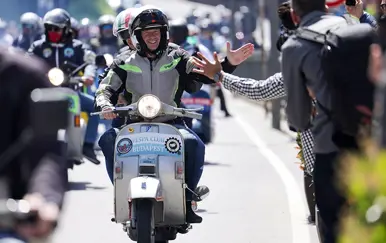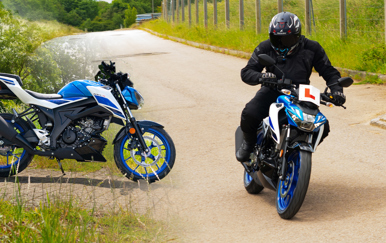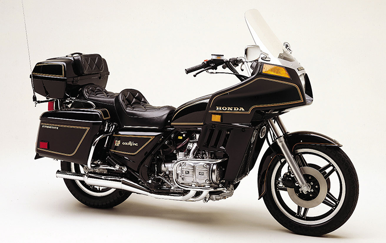There is no better known or arguably more successful modern superbike than Suzuki’s GSX-R.
Whether in 600, 1000 or original 750cc guise, the ‘Gixxer’ has done it all: won racing championships, become the go-to bike for street loons and sold over a million all told.
And with this year – 2025 – marking the 40th anniversary of the launch of the original, with Suzuki planning a special celebration at this year’s Motorcycle Live at Birmingham’s NEC, there’s no better time to revisit what has made the GSX-R so significant.
When was the first GSX-R built?
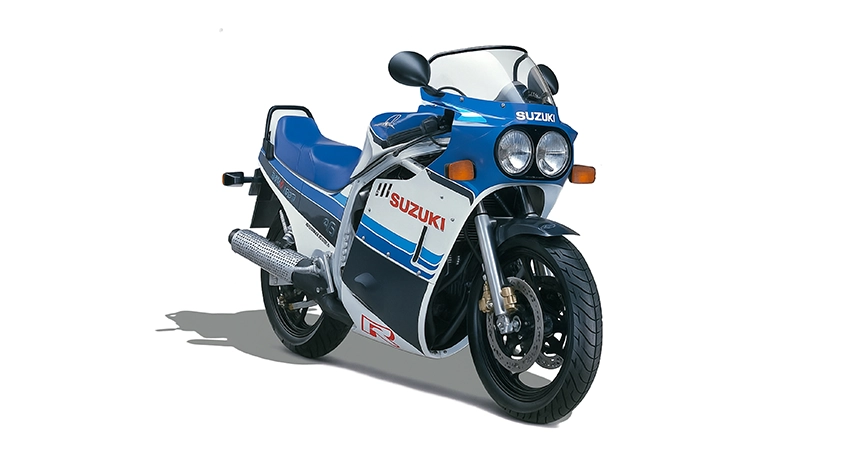
The GSX-R’s success is largely down to the impact of the original, the GSX-R750F. Unveiled at Cologne in autumn 1984 it caused a sensation. With clip-ons, full race fairing, twin headlights and lightweight aluminium chassis no sports bike had ever looked so focused. And, with a dry weight of just 176kg (33 less than Yamaha’s new FZ750) and revvy 100bhp it promised the performance to back up its style.
It was inspired by Suzuki’s long racing history, starting with 50 and 125cc ’60s two-strokes leading to the RG500 of Barry Sheene in the 1970s, all promoting Suzuki’s then road-going GT strokers. But by decades’ end, with the GTs replaced by a new breed of four-strokes, starting with the 1976 GS750, then GS1000 and GSX1100, it was clear a different approach was needed and Suzuki’s racing began to be more four-stroke orientated as well.
The XR69 came first, an F1 machine using a tuned GS1000 engine which was followed by the 1982 XR41 with a lighter, box-section aluminium frame and monoshock. That bike’s success convinced Suzuki lightweight aluminium frames were its sporting future prompting the 1983 RG250 followed by the first GSX-R, the 1984 four-cylinder, Japan-only GSX-R400.
Developing a GSX-R for the world market
For its bigger, ‘world market’ GSX-R, Suzuki had even bolder ambitions. With the American Motorcyclist Association (AMA) in 1983 reducing Superbike capacity to 750cc, Suzuki decided its forthcoming big GSX-R would be a 750. The project was led by ex-racer Etsuo Yokouchi who was determined to bring the lightness and purity of a racer to the street and set goals of: 100bhp; a top speed of 146mph and dry weight of just 176kg.
Water-cooling wasn't an option as casting techniques weren't yet optimized, so Tatsunobu Fujii came up with an enhanced air/oil-cooling system, ‘Suzuki Advanced Cooling System’, or SACS, which allowed the new engine to keep cool and achieve 100bhp.
The chassis team, led by Hiroshi Fujiwara, worked to create a stronger version of the GSX-R400’s aluminium frame, the result, at just over 8kg, less than half that of the GS’s steel frame. While the slab-sided (hence ‘slabby’ nickname) bodywork mimicked the XR41 wherever possible. In short, no stone was left unturned. No wonder, then, that that first GSX-R750 caused such a sensation and proved such a success on track.
In 1985’s new MCN Streetbike race series GSX-Rs won nine of the 11 races with Mick Grant winning the first four.
The GSX-R1100
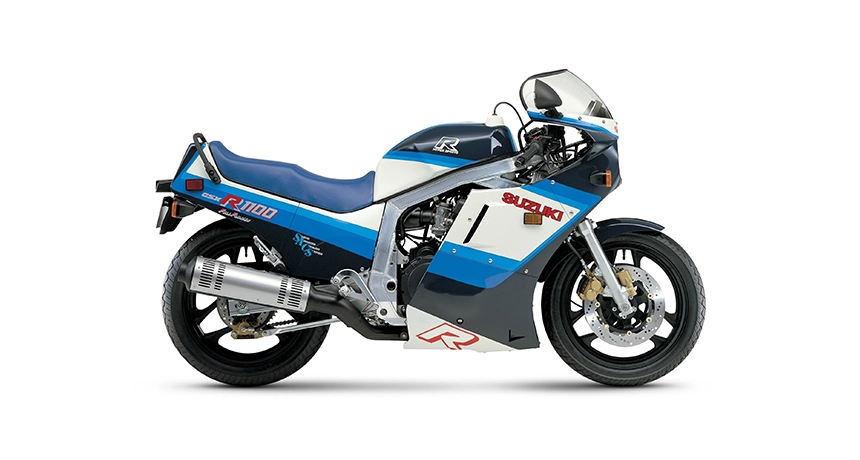
The GSX-R1100 arrived the following year to a similar impact, doubling the GSX-R stable and a dynasty was begun. The first 750 and 1100 gained their first big evolutions in 1987/88, pioneeringly adopted inverted forks in 1990 and, even though outpaced by Honda’s revolutionary CBR900RR FireBlade in 1992, the GSX-Rs remained hugely popular ‘go-to’ superbikes up to the mid-1990s.
Evolution became revolution with the arrival of the GSX-R750 SRAD in 1996. Based on the dimensions and ergonomics of Kevin Schwantz’s 1993 Grand Prix World Championship-winning RGV500 and with a new twin-spar aluminium frame and compact, high-revving engine, it brought the GSX-R closer than ever to Suzuki’s factory race bikes.
How Suzuki set new sportsbike standards
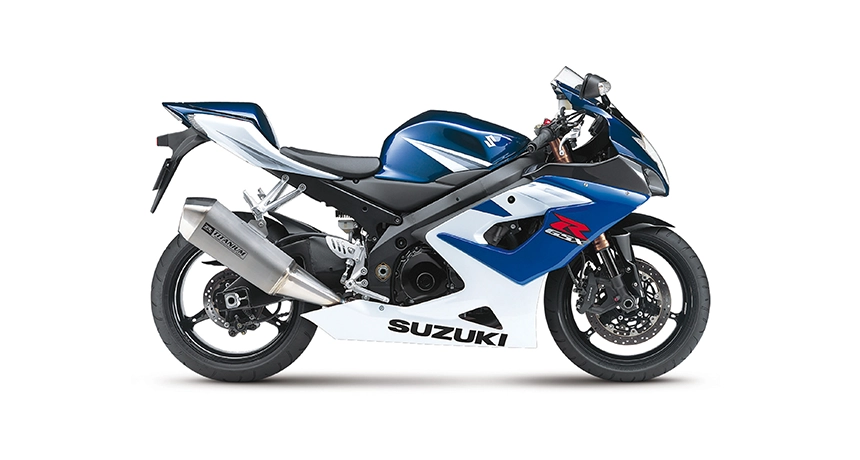
The first GSX-R600 followed in 1997, and, with the discontinuation of the GSX-R1100, the first GSX-R1000 was released in 2001, again moving the sportsbike game on a stage further, with a power-to-weight ratio that redefined superbike standards.
It won the British Superstock championship in its first year with Aussie Paul Young, and again in its second and third years of competition. The 2005 GSX-R1000 K5, four years later, built on that foundation and brought further advances, winning the World Superbike Championship at the hands of Troy Corser.
The 2011 GSX-R750 and 600s were widely-praised following their release, with the 600 going on to win the British Supersport Championship in its first year with Alastair Seeley. While the GSX-R1000 underwent its final evolution in 2012 before being completely redesigned for 2017.
The Suzuki L7 GSX-R1000R
Incorporating MotoGP-derived technology – most notably a clever variable valve timing system – the L7 GSX-R1000R was again widely praised for its track performance but also its civility as a road-going superbike. It won that year’s Senior TT with Isle of Man legend Michael Dunlop, and after finishing runner-up twice, it won the 2019 National Superstock 1000 championship in the hands of Richard Cooper.
The future of the GSX-R
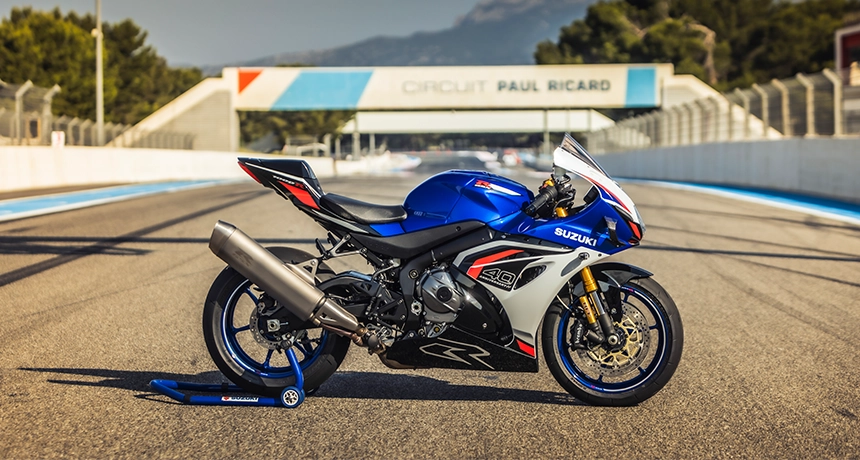
Although the GSX-R600 and 750 were both dropped from Suzuki UK’s line-up in 2018, due to every tightening EU emissions regulations and the 1000 followed in 2022 (although all remain available in markets outside the EU zone), Suzuki GB stunned British motorcyclists by announcing an updated, revised, 40th anniversary edition would return for 2026 and would be unveiled at Motorcycle Live.
In celebration there will be a dedicated display at the NEC featuring a number of models from the GSX-R’s history, including a 1985 GSX-R750, GSX-R750 SRAD and a K5 GSX-R1000.
Suzuki at Motorcycle Live
To kickstart the celebrations, Suzuki will host a special VIP event on the morning of Saturday 15 November – the opening day of MCL 2025 – which will take place on the Suzuki stand an hour before the show opens to the public. The event will celebrate both the anniversary and the launch of the new GSX-R1000R, with attendance by invitation only and open to customers that have placed a deposit on the 2026 GSX-R1000R 40th Anniversary Edition.
Hosted by presenter and broadcaster Grace Webb, it will include insight into the new GSX-R from Paul de Lusignan, Suzuki GB’s director of motorcycles, followed by talks with 2024 Endurance World Championship winner Dan Linfoot, who also recently won the 2025 Bol d’Or with the Yoshimura Suzuki Endurance Team, and 2004 British Superbike champion and former GSX-R test rider, John Reynolds.

VIPs will receive a goody bag, the chance to meet and talk with Linfoot, Reynolds, and the Suzuki GB team, and get a first look at the GSX-R1000R 40th Anniversary Edition in the metal before anyone else in the UK.
Suzuki GB marketing manager, Jak Tyrrell, said, “I think it’s fair to say that no other range of motorcycles has moved the game on in the way that GSX-R has over the last four decades, or has played such a big part in the motorcycling journey of so many riders over the years. 40 years is an incredible milestone, and we’re really excited to be able to celebrate such an anniversary at MCL, talk with owners old and new about their GSX-R history, all ahead of the arrival of the anniversary edition next year.”



